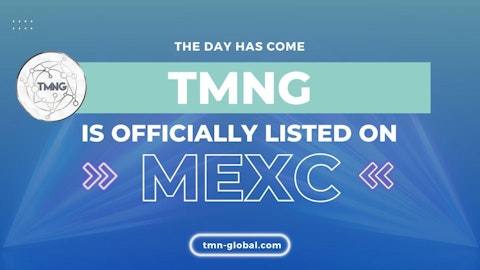In this article, we will discuss the 15 states with the most expensive health insurance in the US. To skip our health insurance industry analysis, you can go directly to the 5 States With the Most Expensive Health Insurance in the US.
Health insurance is important for financing healthcare and medical expenses. These may include hospital bills, annual visits to the doctor, prescription bills, dental care, and other specialist visits. However, many Americans struggle to afford health insurance to meet their medical needs. According to Forbes, about 70% of non-elderly adults reported that their primary reason for not getting health insurance was the sky-high cost of insurance plans. During 2022, 8.4% of adults did not have health insurance at one point or another. The high cost of healthcare can prevent individuals from seeking necessary medical assistance. Approximately a quarter of adults have reported instances where they or a family member had to forgo medication by either skipping doses, taking less than prescribed, or not filling a prescription in the past year due to the high cost of prescription drugs. Furthermore, 41% of adults also report acquiring debt from their medical bills. Currently, the United States is the only high-income country in the world without universal healthcare. It comes as a surprise when the US is also the country with the highest healthcare costs. According to a report by the OECD, the US spends an average of $12,555 per capita on healthcare, which equates to 16.6% of its GDP. This is much higher than the average healthcare expenditure by developed countries at $4986 per capita. Despite the substantial financial investment in healthcare, the United States has to deal with issues of poor quality and limited accessibility to its healthcare services.
Rising Health Insurance Expenditure
Employer-sponsored health insurance is the most popular type of health insurance in the US. About 50% of the population relies on employer-sponsored healthcare to pay their medical bills. However, US employers saw a huge spike in health insurance costs, with premiums increasing up to 7% in 2023. This has also translated into higher worker contributions to the monthly premium. The annual cost of health insurance premiums for single individuals has risen from $7,911 in 2022 to $8,435 in 2023, and the cost of family coverage has increased from $22,463 to $23,968. The cost of insurance also depends on the tier of the health insurance plan. These tiers include catastrophic, bronze, silver, gold, and platinum. Catastrophic and bronze provide the least amount of coverage and, therefore, have lower premium and deductible costs. Silver-tiered plans fall in the middle, with moderate coverage and rates. Gold offers slightly more value and costs just a bit more than silver. Following gold, there is platinum, which is the most expensive health insurance plan of all. Just to put things into perspective, the average cost of premiums in a bronze plan is $420 per month for an average middle-aged citizen. For silver, this rate goes up to $549, and for a gold plan, the average monthly premium stands at $713.
Regional Disparities in Health Insurance Costs
Health insurance costs differ based on various factors, with one significant factor being the state of residence. Healthcare is comparatively cheaper in some states as compared to others. For example, Alaska is one of the top states with the most expensive health insurance costs in the US. This is because Alaska’s small population is isolated from the bigger markets due to its remote location. This, combined with the limited number of medical professionals available, drives up the cost of healthcare in the state. As of 2022, around 10.7% of adults in Alaska are uninsured. On the other hand, California has much lower health insurance costs than Alaska, with the average cost for a silver plan going up to $600. The most expensive health insurance in California is a platinum plan for an elderly adult, with an average monthly rate of $1982.
Despite the inflated prices of healthcare across American states, there are some states with free healthcare for low-income and underprivileged populations. An initiative by the Health Resources and Services Department is the Health Center Program, which provides affordable and high-quality medical care in areas where medical services are least accessible. The government’s Medicaid program allows low-income adults to sign up for coverage. It currently provides coverage across 41 US states, including Washington D.C. Ten states have still not adopted the Medicaid expansion. During the past three years, Medicaid enrollment has grown by 32.4% or 32.1 million. While government programs and federal incentives provide sufficient health insurance coverage for low-income populations, there is still a need for universal healthcare across the United States. Private companies and organizations like UnitedHealth Group (NYSE:UNH) continue to provide healthcare access and coverage to American citizens. UnitedHealth Group (NYSE:UNH) is the biggest health insurance company in the US by market capitalization. Some other notable companies operating in the health insurance sector include Elevance Health, Inc. (NYSE:ELV) and The Cigna Group (NYSE:CI).
Here’s what Baron Funds said about UnitedHealth Group (NYSE:UNH) in its Q3 2023 investor letter:
“UnitedHealth Group Incorporated (NYSE:UNH) is a diversified health and well-being company with $200 billion in revenue that operates across four segments, United Healthcare, Optum Health, OptumInsight, and OptumRX, serving 134 million individuals in all 50 states and more than 125 countries. Shares increased on a second quarter upside surprise, including an EPS beat and medical loss ratio of 82.3%, 30 basis points better than investors had feared after management’s warning of higher Medicare Advantage utilization. Investors were also reassured by management confidence that it had priced to trend, which it backed up by raising the low end of 2023 guidance. We remain positive on this market-leading managed care company with revenue twice that of its closest competitor. The company continues to gain Medicare Advantage share given attractive and stable benefits and could achieve greater profitability as medical management is deployed across newer, higher acuity lives. We believe UnitedHealth has a broad number of levers at its command and can sustainably deliver 13% to 16% annual long-term earnings growth.”
Our Methodology
To compile a list of the 15 states with the most expensive health insurance in the US, we consulted reputable sources, including KFF and the Centers for Medicaid & Medicare Services (CMS). We have ranked the states in ascending order of the monthly average cost of health insurance as of 2023. This average cost is calculated based on a silver-tiered coverage plan designed for a 40-year-old individual with average medical expenses. With this context in mind, let’s take a look at average health insurance cost by state.
States With the Most Expensive Health Insurance in the US
15. Texas
Monthly Health Insurance Cost: $589
Increase in Cost from 2022: 2%
While Texas has a relatively moderate cost of healthcare per capita as compared to other states ($8048), its residents still struggle to pay some of the highest health insurance premiums in the country. In 2020, it was found that Texans were spending 14.2% of median income on insurance premiums and deductibles.
14. Alabama
Monthly Health Insurance Cost: $591
Increase in Cost from 2022: 2%
The average healthcare spending per capita in Alabama is $8788, with average insurance costs only slightly higher than in Texas. Given the high cost of insurance, 8.6% of Alabama residents were uninsured in 2022.
13. Florida
Monthly Health Insurance Cost: $599
Increase in Cost from 2022: 2%
Florida is ranked fourth amongst the states in healthcare spending per capita, amounting to $9501. The high cost of healthcare directly translates to high insurance premiums across the state, with an average monthly premium of $599.
12. Connecticut
Monthly Health Insurance Cost: $614
Increase in Cost from 2022: 9%
Connecticut residents have struggled with the high cost of healthcare services and coverage for a long time now. In 2020, almost 44% of adults in the state had to forego or delay healthcare due to the high cost. In 2022, 5.2% of the population was uninsured. The healthcare spending per capita is $11,899 in Connecticut. The state is at the twelfth position on our list of states with the most expensive health insurance in the US.
11. Missouri
Monthly Health Insurance Cost: $626
Increase in Cost from 2022: 1%
While the overall healthcare costs in Missouri are much lower than in Connecticut at $9461, Missouri still struggles with a higher average health insurance cost of $626. This may explain why 8.4% of the residents of Missouri remained uninsured in 2022.
10. Oklahoma
Monthly Health Insurance Cost: $634
Increase in Cost from 2022: 0%
Oklahoma has healthcare spending quite similar to that in Alabama, with a per capita cost of $8997. However, the average cost of insurance premiums is still significantly higher in the state. The high insurance costs contribute to 11.9% of residents being uninsured within the state.
9. Louisiana
Monthly Health Insurance Cost: $652
Increase in Cost from 2022: -10%
Louisiana is among the most expensive states for healthcare, with healthcare spending per capita of $9796. Despite a 10% drop in the average cost of insurance premiums from 2022, Louisiana remains in the top 10 states with the most expensive health insurance in the US.
8. Nebraska
Monthly Health Insurance Cost: $652
Increase in Cost from 2022: -5%
Nebraska also saw a decline in the average cost of insurance premiums from 2022. However, it remains tied with Louisiana, with an average monthly premium of $652. It is ranked the 6th most expensive state for healthcare, with a per capita spending of $9974.
7. North Carolina
Monthly Health Insurance Cost: $666
Increase in Cost from 2022: 5%
North Carolina is much more affordable in terms of healthcare as compared to the other states on our list. However, the cost of health insurance has been skyrocketing in North Carolina for a few years now. Last year, North Carolina had 9.4% uninsured residents, which may increase given that the cost of healthcare and coverage keeps on increasing significantly in the state.
6. Vermont
Monthly Health Insurance Cost: $760
Increase in Cost from 2022: -6%
Vermont has an average health insurance premium of $760, reflecting a significant decrease from the 2022 average insurance rates. However, Vermont still remains one of the most expensive states in terms of health insurance. The average healthcare spending per capita in the state is $12,237. Around 3.4% of the state’s residents were uninsured in 2022.
Some notable companies operating in the health insurance sector include UnitedHealth Group (NYSE:UNH), Elevance Health, Inc. (NYSE:ELV), and The Cigna Group (NYSE:CI).
Click to continue reading and see the 5 States With the Most Expensive Health Insurance in the US.
Suggested articles:
- 21 Countries with Most Spanish Speakers Heading into 2024
- 20 Most Advanced Countries in Science and Technology
- 18 Hardest Countries to Get Citizenship in 2023
Disclosure: None. 15 States With the Most Expensive Health Insurance in the US is originally published on Insider Monkey.





